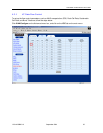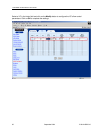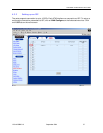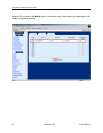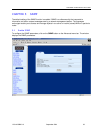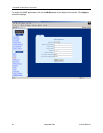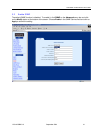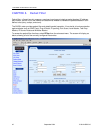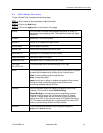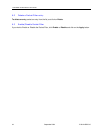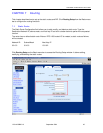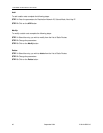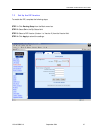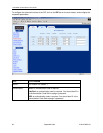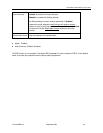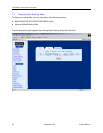
1740 SHDSL 2/4-Wire Router User’s Guide
6.1 Add a Packet Filter entry
To add a Packet Filter, complete the following steps:
STEP 1:
Enter values for the parameters (explained below).
STEP 2:
Click on the Add button.
STEP 3:
Click on the Apply button at the bottom of the page.
Priority You can enter a number here to assign the priority of a filter, in
case there are overlapping rules. The lower the number the higher
its priority.
Protocol Select from TCP/UDP/ICMP/IP.
Source IP Source IP of a packet you wish to filter.
Source Mask Source Mask of a packet.
Source Port Source Port of a packet you wish to filter.
Destination IP Destination IP of a packet you wish to filter.
Destination Mask Destination Mask of a packet.
Destination Port Destination Port of a packet you wish to filter.
TCP Flag
([F.S.R.P.A.U]
This field allows you to filter according to a TCP flag.
Action This field determines the action the router will take when it receives
a packet that corresponds to a filtering rule. It can be set to:
allow, to let the packet pass through the filter.
deny, to drop the packet.
count, which has no effect on whether the packet will be allowed
through the filter, causes the packet to be included in the
accounting statistics kept by the filter.
Interface You can choose to apply this setting to a specific LAN or ATM
interface. This function is called Packet Binding.
Packet Binding is a function that can be used when we have
multiple Virtual Channels (VC) and we are utilizing IP Packet
Filtering. In some cases, we may not wish to apply the packet
filtering to all VCs. In this case, we can bind IP packet filtering to a
VC. This means that filtering will only be applied to the bound VC,
and thus the remaining VCs will not filter packets.
Direction
This field determines whether the rule applies to Inbound,
outbound or both directions
1740-A2-GB20-10 September 2004 43



